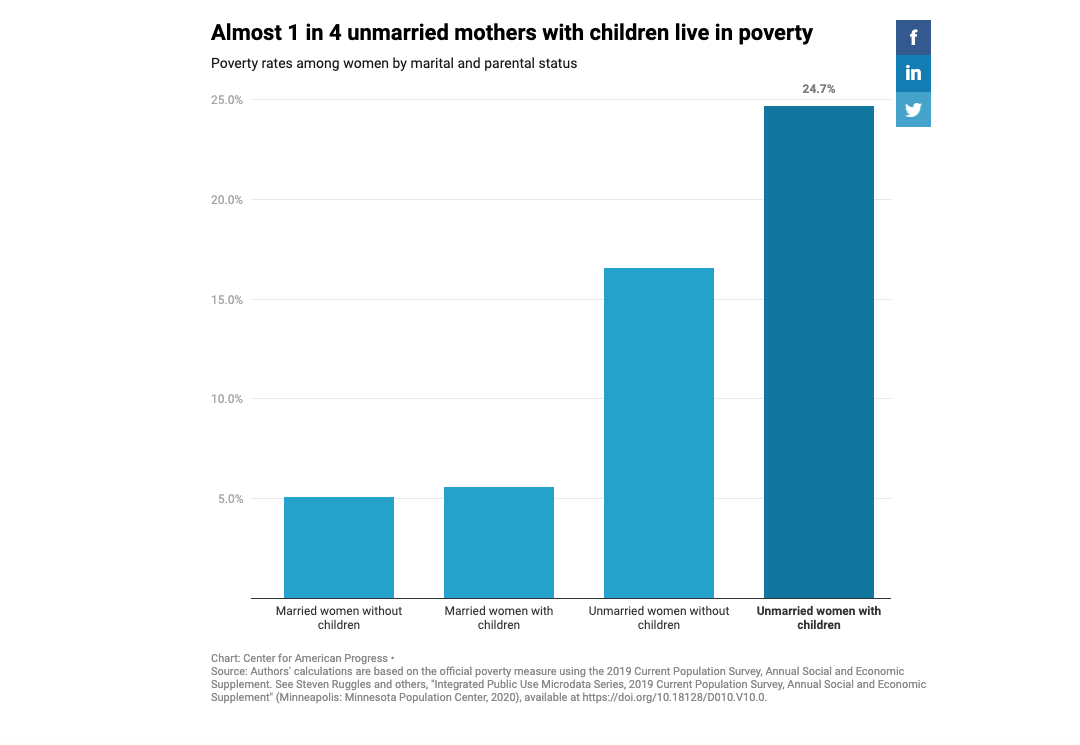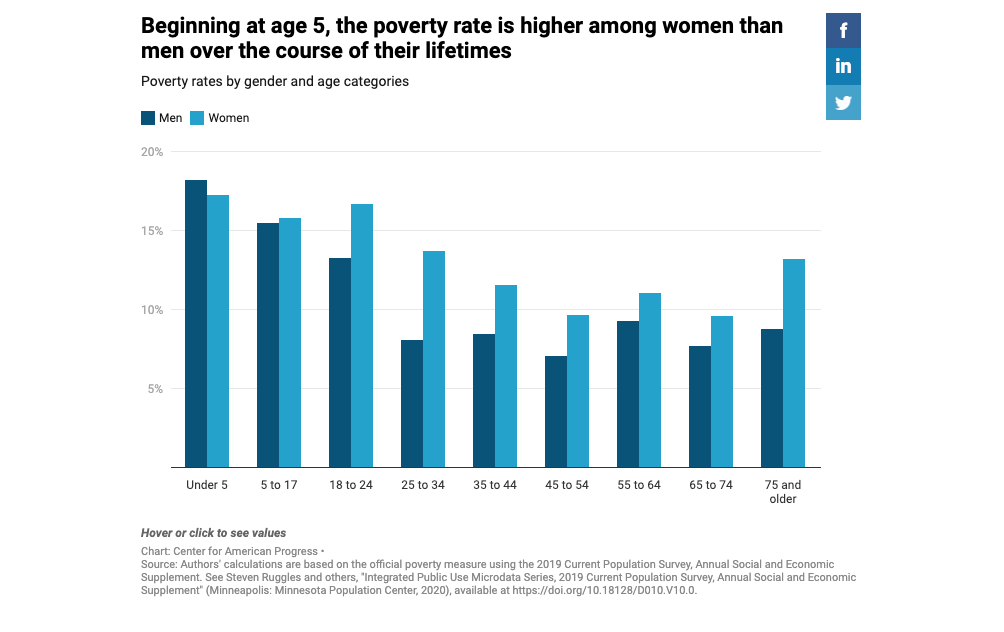The Basic Facts About Women in Poverty
To lift women out of poverty, policy solutions must address the myriad ways that structural and societal sexism and racism uniquely burden women, depress their wages, and limit their opportunities.
Source: American Progress
A result of disproportionate representation in low-wage jobs, limited access to employment opportunities and unequal pay, women across the country experience poverty at greater rates compared to men. Of the 38.1 million people who were living in poverty in 2018, 21.4 million (56%) were women. Particularly, women of color are more likely to experience greater levels of poverty compared to men, as well as encounter a wider wage gap. In 2018, a woman working full-time earned an average of 82 cents for every $1 earned by their male counterparts while Latinas earned 54 cents; AIAN women earned 57 cents; and Black women earned 62 cents to the dollar.
Moreso, about a quarter of unmarried mothers live below the poverty line. As a result, in 2018, 11.9 million children younger than 18 made up 31.1% of those living in poverty. The lack of available resources, such as affordable and reliable child care and paid family leave, have contributed to lower employment among mothers compared to fathers, leading to higher rates of poverty among women. Another great contributing factor is domestic violence. In the United States, on average, 8 million days of paid work per year are lost as a result of domestic violence and over half of women who experience homelessness have cited domestic violence to be the immediate cause.
“To lift women out of poverty, policy solutions must address the myriad ways that structural and societal sexism and racism uniquely burden women, depress their wages, and limit their opportunities.” Improving vital public assistance programs, addressing workplace disparities, ensuring work-family benefits and expanding access to lifesaving supports are some of the numerous solutions to ensure the economic wellbeing of women and children across the country. For more information, please visit https://www.americanprogress.org/article/basic-facts-women-poverty/


